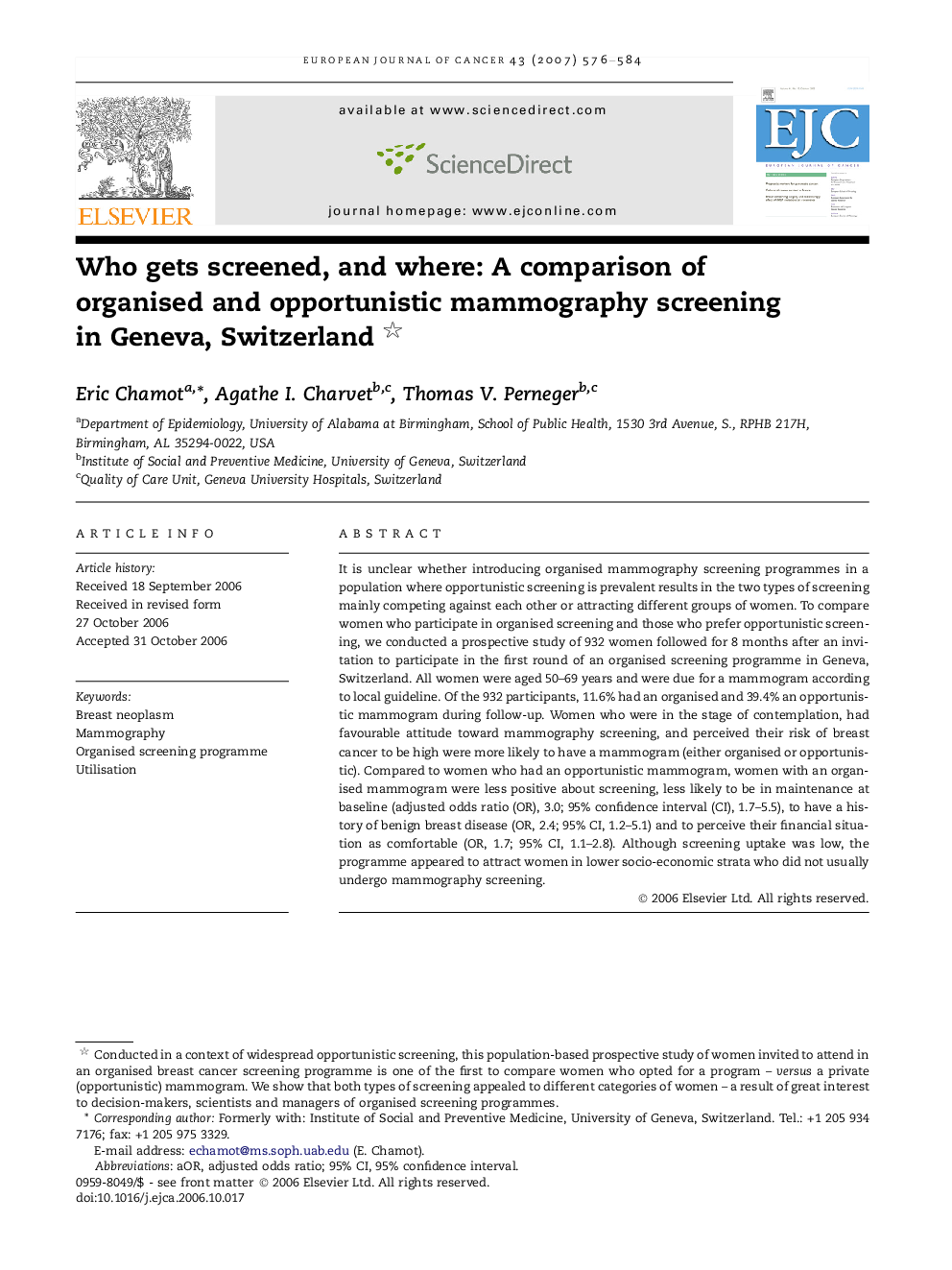| Article ID | Journal | Published Year | Pages | File Type |
|---|---|---|---|---|
| 2125716 | European Journal of Cancer | 2007 | 9 Pages |
Abstract
It is unclear whether introducing organised mammography screening programmes in a population where opportunistic screening is prevalent results in the two types of screening mainly competing against each other or attracting different groups of women. To compare women who participate in organised screening and those who prefer opportunistic screening, we conducted a prospective study of 932 women followed for 8 months after an invitation to participate in the first round of an organised screening programme in Geneva, Switzerland. All women were aged 50-69 years and were due for a mammogram according to local guideline. Of the 932 participants, 11.6% had an organised and 39.4% an opportunistic mammogram during follow-up. Women who were in the stage of contemplation, had favourable attitude toward mammography screening, and perceived their risk of breast cancer to be high were more likely to have a mammogram (either organised or opportunistic). Compared to women who had an opportunistic mammogram, women with an organised mammogram were less positive about screening, less likely to be in maintenance at baseline (adjusted odds ratio (OR), 3.0; 95% confidence interval (CI), 1.7-5.5), to have a history of benign breast disease (OR, 2.4; 95% CI, 1.2-5.1) and to perceive their financial situation as comfortable (OR, 1.7; 95% CI, 1.1-2.8). Although screening uptake was low, the programme appeared to attract women in lower socio-economic strata who did not usually undergo mammography screening.
Related Topics
Life Sciences
Biochemistry, Genetics and Molecular Biology
Cancer Research
Authors
Eric Chamot, Agathe I. Charvet, Thomas V. Perneger,
